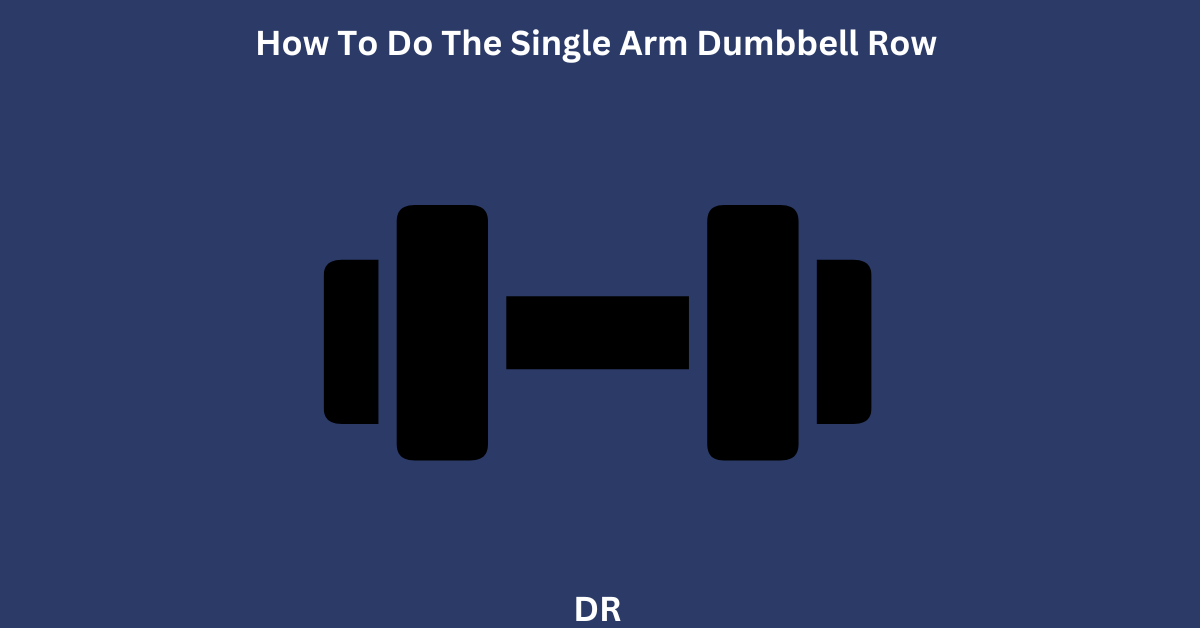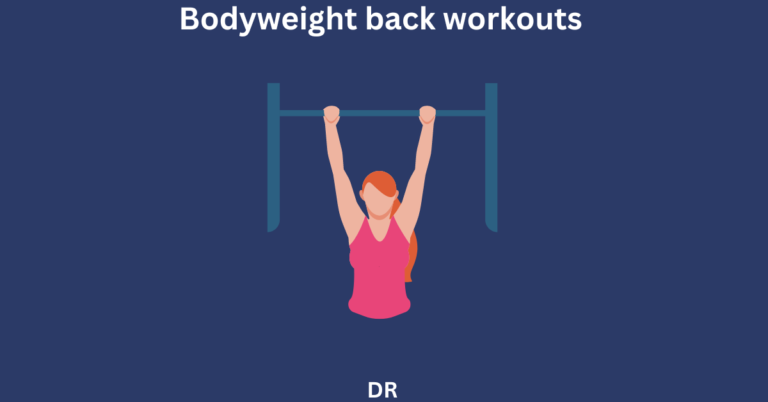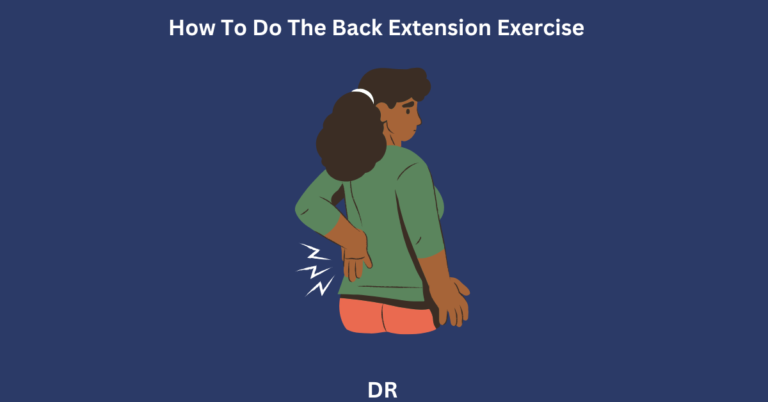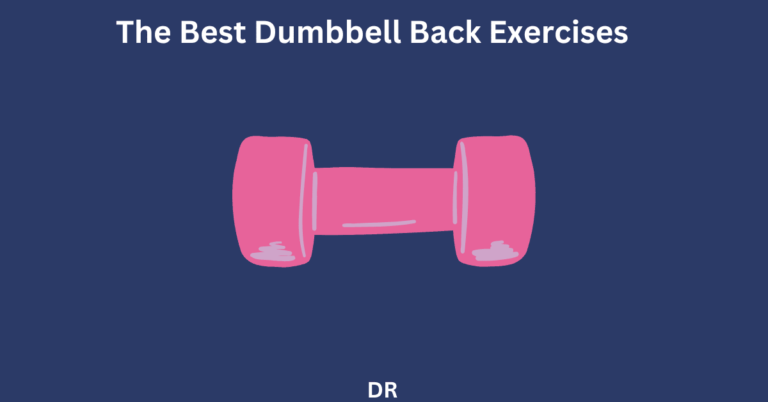How To Do The Single Arm Dumbbell Row, the Best Method in 2024
Understanding Back Workouts
Focusing on back workouts is super important for strength and standing tall. Let’s chat about why these exercises are a big deal and which muscles are getting the love.
Importance of Back Exercises
Adding back workouts to your regular sweat session keeps everything in balance. A tough back helps you stand straight, stay away from getting hurt, and lets you crush it physically. When you do something like the single arm dumbbell row, not only are you beefing up your back, but you’re also giving your core, shoulders, and biceps a little extra. This powerhouse move is a lifter’s fave, no joke. Just ask Dr. John Rusin, he’s got the deets.
Muscle Groups Targeted
Back workouts, like the superstar single arm dumbbell row, get several key muscles fired up. Knowing which ones can help you get your form right and get the most out of those reps.
| Muscle Group | What’s It About |
|---|---|
| Latissimus Dorsi | Biggest muscle in the back, runs from lower back to upper arms. |
| Rhomboids | Chillin’ between shoulder blades, they pull the scapula back. |
| Trapezius | Stretches down the mid-back, helps out the neck and shoulders. |
| Erector Spinae | Muscles along the spine, they keep you standing tall and stable. |
| Posterior Deltoids | Backside of shoulder muscles, critical for extending and spinning the shoulder around. |
| Biceps Brachii | Front of the arm, helps bend the elbow and twist the forearm. |
As per ISSA Online, the single arm dumbbell row is all about the latissimus dorsi, those posterior delts, rhomboids, and trapezius. But don’t forget, your biceps and core step up too, keeping things steady and pulling that weight.
Wanna mix it up with different back exercises? Check out our guides on dumbbell back exercisesand back exercises for lats. This is your ticket to a solid back game, so every muscle group gets the attention it deserves.
Benefits of Single Arm Dumbbell Row
If you’re looking to beef up your upper bod, the single arm dumbbell row should be on your shortlist. Let’s get into why this exercise might just become your new best friend.
Targeting Upper Body Muscles
The single arm dumbbell row is your ticket to a stronger back and arms. It hits major muscle groups like the lats, the shoulders’ back side, and those pesky rhomboids and traps that often dodge attention. This is like a one-stop shop for your back’s strength and sculpting needs.
But, we’re not just talking ’bout back muscles here. Your arms get a piece of the action too. It gives the biceps and triceps a good workout, meaning while you’re building that V-taper, your guns are getting some love too. This whole-body harmony means you’re setting yourself up for some solid upper body gains. If different upper back exercises tickle your fancy, hop over to our article on upper back exercises and diversify your routine.
| Muscle Group | Primary Target |
|---|---|
| Upper Back Muscles | Lats, Posterior Deltoid, Rhomboids, Traps |
| Upper Arm Muscles | Biceps, Triceps |
| Core Muscles | Abs |
Improving Posture and Stability
For those of us glued to our desks or couch potatoes, the single arm dumbbell row works wonders on posture. Stronger upper backs make for happier spines, and this exercise gets that part of your body standing up straight. It’s like giving a massage to your spine’s supporting muscles, keeping the hunch at bay.
Oh, and let’s not forget your core. Your abs get in on the action too, helping out while you pull that dumbbell. This isn’t just about getting rippling muscles but also finding better balance and keeping injuries at a distance. Remembering to keep that back firm and those shoulder blades working rather than the arm itself will maximize your gains.
If you’re just starting, resist the temptation to go heavy out of the gate. Start with lighter dumbbells to nail the form before you start increasing that weight. It should feel challenging yet doable. That way, you’re building up those smaller stabilizers that often get neglected in rush to go heavier. More on harnassing stability can be found in our guide on core stability and muscle balance.
Incorporating Single Arm Dumbbell Row
The single arm dumbbell row’s like the Swiss Army knife in your gym bag. It’s got versatility written all over it—whether you’re hitting a back session, amping up your arms, or going full-body mode, this exercise has got your back (literally).
Using It Like a Boss in Workout Plans
This exercise slots into workouts smoother than a hot knife through butter. Let’s break it down, shall we?
Back Days: Toss this bad boy into your dumbbell back routine and watch those lats, traps, and rhomboids light up. Perfect buddy for your regular dumbbell row or barbell row. It’s like peanut butter and jelly for your back muscles.
Arm Workouts: Feels a bit more like a mini-arm army rather than just a single exercise. It works your biceps and forearms full-throttle. Pair it with some upright dumbbell rows to give your guns that extra pop.
Full-body Burn: Imagine working tons of muscles in one go. This is not just a row, it’s more like a mini circus act for all your muscle groups. Combine it with things like squats or deadlifts for a workout that screams strength and stability.
Feeling adventurous? Try hitting the row using a bench or a stability ball. It’ll give your core a run for its money too.
How Often and a Few Tips
Want to get the most out of your rows? Here’s a little blueprint to follow:
Weekly Action Plan: Keith Hodges, pro trainer, recommends pulling rows at least twice a week. Keep that muscle balance and back strength in check!
Fixing That Slouch: If you’re looking to fight off that I’ve-been-stuck-at-a-desk curve, work in exercises that pull back those shoulder blades every time you hit the gym. Some consistent effort here can make a real difference.
Reps & Sets Game: Think along the lines of 3 to 4 sets of 8 to 12 reps. Start light to nail the form, then you can start piling on the weight like you’re stacking pancakes at breakfast.
| Frequency | Reps | Sets |
|---|---|---|
| Twice a Week | 8-12 | 3-4 |
| Posture Fixin’ | Every Time | 3-4 |
When adding the single arm dumbbell row to your line-up, keep the focus on that form. No need to play superhero with heavy weights if it means you’ll tweak your back. Steer clear of the usual suspects: random spine twists, hunching over like Quasimodo, or gripping a weight that’s too big to handle.
For that well-rounded strength-building plan, spice things up with a mix of upper back exercises, lower back exercises with weights, and chuck in some other compound goodies. Build a rock-solid foundation from your head to your toes.
For more nuggets of wisdom on beefing up your back workouts, peek into some awesome compound back exercises and check out other back exercises for men that keep your gym game fresh.
Proper Form and Technique
Getting the hang of the single-arm dumbbell row isn’t just about looking cool in the gym mirror—it’s about hitting those muscle groups just right and steering clear of injury. Here’s how to get it right:
Targeting Muscle Areas
So you’ve picked up a dumbbell and you’re keen to flex. A well-done single-arm row works wonders for your upper back. Here’s what you’re aiming to engage:
- Latissimus Dorsi: Picture these as the wings on your back. They’re big players in anything that involves tugging or pulling.
- Posterior Deltoid: Think of these as the backup dancers located at the back of your shoulders, adding a bit of flair to shoulder movements.
- Rhomboid: Nestled between your shoulder blades, their job is to squeeze those blades together – like giving yourself a little hug.
- Trapezius: These stretch from your neck to mid-back, making sure your shoulders don’t just float away.
Playing backup are:
- Erector Spinae: These keep your back from resembling a noodle.
- Biceps Brachii: They give a helping hand in bending the elbow.
- Core Muscles: They stop you from toppling over while you’re lifting (ISSA Online).
If you’re itching to work these guys more, pop over to our page on upper back exercises.
Common Mistakes to Avoid
Now, don’t be the person doing the row all wrong. Steer clear of these blunders:
- Rounding the Back: Hunchback rowers unite! Actually, no, don’t. Channeling the human rainbow shape could hurt your game. Keep your spine like a ruler to avoid mishaps and really work those muscles.
- Using Too Much Weight: The weights don’t have to be Titanic-heavy. Start light to get the form down pat, then crank it up when you’re ready to show off.
- Limited Range of Motion: Pull that dumbbell right up to your hip. No half measures here—go big or go home.
- Relying on Momentum: This is not a rock ‘n’ roll concert. Swinging the weights cheats your muscles out of their workout. Ease the weight up, and let it down just as gently.
- Neglecting Core Engagement: Enlist that six-pack (or works-in-progress) to give you a solid foundation and stop any wobbles. It keeps you planted while you row.
If your eyes glazed over, we’ve got a visual guide on dumbbell row to help wrap your head and hands around the technique.
Mastering these moves means you’re on your way to piling on the muscle gain and boosting overall strength. Slip dumbbell rows into your workout menu and really feel the difference in your back sessions. And if you’re after a spicy twist, the one arm cable row might just be your thing, working your muscles in cool new ways.
Variations of Dumbbell Rows
Trying out different ways to perform the single arm dumbbell row can really up your muscle game. These tweaks aren’t just for show—they’re here to help build muscle power and make your sessions a bit more interesting. Let’s talk about some cool variations you can add to your weekly routine!
Enhanced Muscle Engagement
Switching up the angle or method of the single arm dumbbell row allows you to zero in on specific back muscles. Picking the right variation can help you work certain spots a lot better.
- Standard Single Arm Dumbbell Row:
- Hits: Lats, rhomboids, traps, erector spinae, the back part of your deltoids, and biceps.
- How to: Prop one knee and hand on a bench while pulling that dumbbell towards your hip.
- Renegade Row:
- Hits: Lats, rhomboids, traps, core, and shoulders all in one go.
- How to: Get into a push-up stance with dumbbells in hand, rowing one while holding steady with the other.
- Kneeling Three-Point Single Arm Dumbbell Row:
- Perfect for: Beginners or folks worried about back pain because it’s more stable (Dr. John Rusin).
- How to: Rest on one knee, plant your other foot flat, and use a bench for support. Keeps your form on point and helps avoid back trouble.
These moves not only work out your back but also share the workload across different muscle groups, helping to keep those annoying injuries away (back injuries).
Incorporating Different Techniques
Switching up techniques maintains the spice in your workouts and keeps the body guessing, which is very good for progress (Verywell Fit).
- Incline Dumbbell Row:
- Perfect for: Building that upper back.
- How to: With an incline bench, this isolates the upper back muscles.
- Internal Link: incline dumbbell row
- Chest Supported Dumbbell Row:
- Perfect for: Keeping that lower back strain-free.
- How to: Lie face down on an incline bench, which lets you target the upper back.
- Internal Link: chest supported dumbbell row
- Landmine Row:
- Perfect for: All-over upper body workout.
- How to: Use a barbell stuck at one end, row the other end towards your chest.
- Internal Link: landmine back exercises
- One Arm Cable Row:
- Perfect for: Keeping muscle under constant tension.
- How to: Pull from a low pulley for a steady resistance throughout.
- Internal Link: one arm cable row
Adding these techniques means more muscle growth and better balance all over. Each one helps with particular goals, perfect for tailoring to your needs.
Switching up your single arm dumbbell row routine with varied styles will bulk up your back workouts and help in balanced muscle growth. Tackle options like the barbell row or upright dumbbell row to keep your exercise game strong for a hearty back and killer endurance.
Maximizing Effectiveness
Want to get the best bang for your buck with single arm dumbbell rows? Let’s make those back muscles pop by understanding the sweet spot for reps and weight that suits you best.
Stimulating Muscle Growth
Building a chiselled back isn’t just about lifting; it’s about lifting right. During your single arm dumbbell rows, the magic happens at the midpoint of the lift – that’s where the muscle growth party’s at! When you go slow and controlled and pause for a beat at the top, you’re really giving those muscles something to think about (Muscle & Fitness).
Dr. Mike Israetel, the guru of pump, says diving deep at the bottom and coming up fully at the top of each rep is the golden rule (BOXROX). Don’t rush the lowering – take those cool 2 seconds to let gravity assist you in muscle engagement (BOXROX).
Muscle Pump Checklist:
- Slow and steady wins the race
- Pause like you mean it at the peak
- Dive deep at the bottom
- Two-second countdown on the way down
Scratch the itch for form details in our Proper Form and Technique section.
Ideal Repetitions and Weight
Finding your stride with single arm dumbbell rows depends on what you’re chasing after. Newbies should kick it off with lighter weights and more reps. But as you gain steam, crank up the weight to match your muscle ambition.
| Level | Reps | Sets | Weight |
|---|---|---|---|
| Fresh Off The Boat | 12 – 15 | 3 – 4 | Light (5-15 lbs) |
| Mid-level Muscle | 8 – 12 | 3 – 4 | Moderate (15-30 lbs) |
Going for 8-12 reps with weights that challenge without breaking you down is the ticket to muscle growth. But hey, safety first; only up the ante when your form’s as smooth as butter.
Repping Right Rundown:
- Newbies: Focus on finesse over force
- Next level: Moderate weight builds mass
- Hit 8-12 reps for muscle magic
- Turn up the weight dial slowly and keep it neat
Head over to Proper Form and Technique for the nitty-gritty on form finesse.
Use these tips to muscle your way to greatness and find what weight and reps work for you. If you want to shake things up, we’ve got tons of dumbbell back exercises waiting for you to try out.
Balancing Strength Development
Oh, the sweet thrill of getting stronger without tumbling over like a wobbly penguin! When back workouts are on the menu, it’s crucial to get a handle on how single-arm and two-arm exercises play their part in keeping your core steady and your muscles on good terms.
Unilateral vs. Bilateral Exercises
Rows, folks. They’re not just for sailors. Whether you’re rowing with one arm or both, there’s a unique flavor to each that can spice up your routine just right.
Unilateral Exercises:
- Single-arm rows are your ticket to tweaking angles and hitting those sneaky spots on your back that usually play hide and seek—like lower lats or your upper lat/rear delts. Spice things up with these, and you might just catch them (Muscle & Fitness).
- They’re great at calling out imbalance by making each arm pull its weight. No more hiding in the team spirit (Quora).
- Your core? It’s like the unofficial member of the exercise anyway since it’s buzzing with activity to keep you from toppling over. Bonus: it grows stronger too.
Bilateral Exercises:
- Two-arm rows are like the group hug your back’s been longing for. They make sure everyone’s involved and you can focus on nailing that perfect form (Quora).
- Dipping into the heavier weights department is easier, leading you to potentially impressive strength triumphs.
Core Stability and Muscle Balance
Mix things up with both exercise styles for a back that won’t quit.
| Exercise Type | What’s Awesome About It |
|---|---|
| Unilateral (e.g., single-arm rows) | Tackles uneven muscles, boosts core stability, pinpoints specific muscles |
| Bilateral (e.g., two-arm rows) | Guarantees even muscle work, makes your posture teacher proud, supports heavier lifting |
Try throwing a one arm cable row or dumbbell seated row into the mix. Give your core a treat with moves like the split stance single arm dumbbell row, which ropes in core stabilizers while giving your lats a pre-stretch hug (Dr. John Rusin).
Blend these one and two-arm wonders from our handy guides on dumbbell back exercises and upper back exercises for a balanced and strong body that knows no bounds.
Advanced Dumbbell Row Variations
So you’re ready to spice up your workouts with some advanced single-arm dumbbell row moves? Let’s crank it up a notch to make your muscles pop and challenge every muscle fibre, not just in your back but in your core, shoulders, and more. Oh yeah, balance will join the party too.
Advanced Techniques for Progression
Split Stance Single Arm Dumbbell Row
Want to beef up your strength or work on that Adonis-like symmetry? The split stance single arm dumbbell row is your ticket. This one’s a core-cruncher and lets you lift heavier, all thanks to the stance. Your lats will love the pre-stretch action here (Dr. John Rusin).
| Features | Benefits |
|---|---|
| Core involvement | Boosts your stability |
| Heavier loading | Builds serious strength |
| Full lat activation | Enhances symmetry across muscles |
Split Stance Dead Stop Single Arm Dumbbell Row
This one’s got a unique twist. The dead stop means you give the weight a little nap on the floor between reps. It might catch your muscles by surprise, but that’s the point! The unexpected makes it a stellar muscle-builder (Dr. John Rusin).
| Features | Benefits | | Dead stop between reps | Fires up muscle potential | | Split stance | Supercharges core stability | | Novel stimuli | Sparks greater muscle growth |
Challenging Core Strength and Balance
Bear Plank Row
Get ready for the bear plank row, where a plank meets a row in a happy union. This move’s a full-on body buster that makes shoulders, core, glutes, hips, and triceps work overtime. Plus, it’s an anti-rotation exercise. Your core will get a workout like no other (One Peloton).
| Features | Benefits |
|---|---|
| Plank position | Cranks up core power |
| Anti-rotation exercise | Steadies you like a rock |
| Full-body engagement | Elevates your overall fitness game |
Renegade Rows
For those who dare, renegade rows bring the heat by mixing a plank and a row. They take aim at your lats, rhomboids, traps, core, and shoulders, testing your balance and giving you a feast of muscle work (One Peloton).
| Features | Benefits |
|---|---|
| Plank and row combo | Fortifies core stability |
| Full body muscle engagement | Powers up functional strength |
| Balance test | Sharpens proprioception like a ninja |
Fancy some more back workouts to own your routine? Check out upper back exercises and dumbbell back exercises. Want more variety? Venture into the world of cable back exercises or try out lower back exercises gym equipment for a fresh twist.







